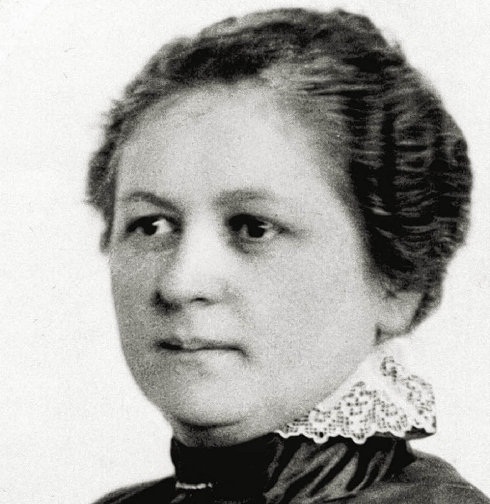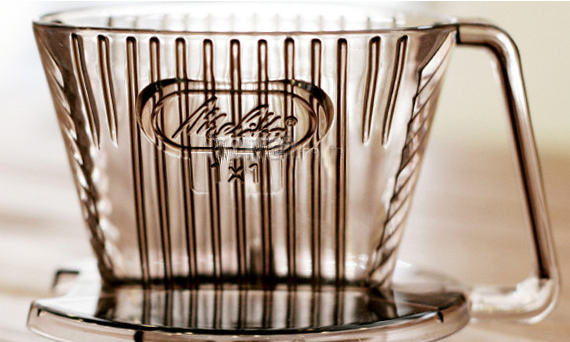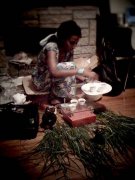Mrs. Merita, the pioneer of follicular coffee.
When it comes to the popular way of brewing coffee in the world, we should thank Bentz Melitta, a German housewife. She invented the coffee bubble method more than 100 years ago, rewriting the history of coffee drinking in Germany and the world.

Born in Dresden in 1873, Bentz Merita, a housewife, likes Sch ä lchen Hee é en (in Saxony dialect, for a cup of coffee eine Tasse Kaffee)-freshly brewed coffee, but she is a perfectionist suitor and hates coffee grounds left between her teeth. One day, on a whim, she punched a hole in the bottom of the copper bowl, took out a piece of blotting paper from her son's schoolbag and put it into hot water, and immediately the mellow coffee dripped into the pot through the blotting paper. In this way, she invented a method of filtering dregs and retaining the aroma of mellow coffee. Before this invention, people used cloth bags to filter coffee grounds. However, the cloth filter bag is troublesome to clean and unhygienic after being used many times, and the coffee grounds left in the gap in the cloth bag are also easy to destroy the original mellow taste of coffee.

On June 20, 1908, Melita registered her invention with the Royal Patent Office: a copper coffee filter cup with a water outlet at the bottom, the world's first follicular coffee cup. At that time, Melita Benz set up the "Melita Company" in her own home with a small amount of money, and used her autograph Melitta as a registered trademark of the product.
Unfortunately, there are few records of the life history of the Dresden daughter who invented the coffee filter in the local archives in Germany. But this great invention soon became a household name and eventually became a must in German kitchens. In the mid-1920s, orders poured in and the business of making Merita coffee filter cups expanded sharply, but the original family company could no longer accommodate 100000 orders for filters, including ceramic filters, and the company moved to Mingdeng in 1929. Today, Melita is still run by the grandsons of the founder. Melita now has more than 3200 employees in 50 branches around the world. Melita's hand filter cup has long been improved in the direction of automation, and after countless improvements, Melita has finally achieved great success in the United States. that is, the most popular American coffee automatic filter machine we see now. But if you take apart an American coffee machine, the principle of the bubble invented by Mrs. Melita has barely changed, only to optimize the shape of the filter and filter paper.

It can be said that there is an enduring coffee feeling in the bones of the Saxon people. Bach, a world-famous composer and chief musician of Thomas Church in Leipzig, wrote Coffee Cantata. The elector of Saxony and the king of Poland, the strong Auguste, admired the fine porcelain of brewing coffee and tea, and he set up Europe's first porcelain handicraft factory in Meissen (Dresden). In Leipzig, Coffe Baum, which opened in the early 19th century, is one of the oldest cafes in the world and is still open today. In Saxon, the words "Bliemchengaffe" and "Blu ü mchenkaffee" are used in very light beverages. Most of these low-concentration drinks are mixed with too much water, so light that you can see the pattern at the bottom of Meissen porcelain filled with coffee.
Today, 51% of German families own a classic filter paper drip coffee automaton, and 6% of them often use Melita's early follicle cups to brew a mellow German coffee by hand.
In the modern and fast-paced information society, it is undeniable that this kind of pure manual follicle coffee which was made 100 years ago has become less and less in Germany and Europe, but this ancient way of brewing coffee has miraculously taken root and blossomed in the oriental land. especially in Japan, South Korea, Taiwan and inland, especially since the Japanese began in the 1950s. Almost obsessed with Melita filter cup, various kinds of coffee filter cup apparatus of follicle type and drip filter type emerge one after another, and a whole set of theory and operation technology of hand-made filter coffee has been established, which is loved by more and more people. It really answers the proverb "the west is not bright and the east is bright".

Typical Melitta single-hole filter cup
Interestingly, the Japanese also invented a series of coffee filter utensils modelled on Merita utensils, which are called Karita.

At present, the popular Kalita 185filter cup
Except for the slight difference in structure, there is no difference in the use of the two kinds of filter cups, because most of the Melitta filter cups are single-hole, so they are also called "single-hole filter cups". Single-hole filter cups are mainly used for medium-and deep-roasted coffee, such as German roasting, while light-roasted ones are easier to plug the filter pores. Kalita filter cup is mostly three-hole, not easy to block, suitable for various roasting degree of coffee, and as long as adjust the amount of extraction can adjust the concentration, it is more convenient to use than Melitta filter cup.
Important Notice :
前街咖啡 FrontStreet Coffee has moved to new addredd:
FrontStreet Coffee Address: 315,Donghua East Road,GuangZhou
Tel:020 38364473
- Prev

General knowledge of boutique coffee culture Greek native coffee
In fact, espresso came to Greece as early as 20 years ago, but it was not until 10 years later that it became popular there. Greek food critic Marie Antimilona (Marianthi Milona) believes that locally, going to a coffee shop for coffee can give people a sense of social identity. She pointed out that although the Greek economy has been depressed in recent years, people will not hesitate.
- Next

Black Coffee Culture Coffee tradition of Ethiopians
Ethiopians still maintain a lot of coffee traditions. They are not used to picking fruit from trees, and more often they collect ripe and fallen fruit from under the coffee tree, which damages the quality of the coffee somewhat. They have always used the traditional sun method to treat coffee beans, but rarely use water washing method, which makes the coffee beans absorb more of the aroma of the pulp, so the fruit flavor is better.
Related
- How did the Salvadoran coffee industry develop in Central America?
- What exactly does the golden cup extraction of coffee mean?
- The Origin of Coffee flower
- [2023 Starbucks World Earth Day] there are more meaningful things besides free Starbucks coffee!
- What kind of coffee is there in Spain? 9 Flavors of Spanish Coffee
- Aromatic African coffee| Kenya's coffee culture and historical production area
- Liberica Coffee Bean knowledge: the characteristics of Liberian Coffee beans of the three original species of Coffee beans
- The origin and formula of Spanish latte introduces the taste characteristics of Bombon coffee in Valencia, Spain.
- How to adjust the solution of over-extracted coffee
- What is the tasting period of coffee beans? What is the period of coffee and beans? How should coffee wake up and raise beans?

